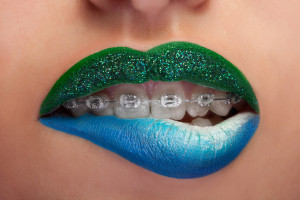If you’re raising a teenager or if you’re around teenagers, you’ll likely see a lot of body embellishments, including pierced ears, lips, tongues, eyebrows and navels. People of all ages wear rings and bracelets on their fingers, toes, wrists and ankles. So, why not dental jewelry? A little gold and perhaps a few semi-precious stones, and you can be flashing an even more dazzling smile. But are there dangers of dental jewelry?
The History of Dental Jewelry
Is “bling for the teeth” the latest fashion craze? In fact, the practice of wearing jewelry on one’s teeth may date back to 2,500 BC. In that first recorded case, it was a gold chain. However, wealthy Etruscan women in 800 BC to 200 BC began wearing the traditional version of what would now be called grills. They would typically have their teeth removed so that they could wear a gold band device that would hold reused or replacement teeth. Alternately, they would have a ring of gold bonded to their teeth, for the sole purpose of adornment. Mayan kings and queens would drill holes in their teeth to fill them with pieces of jade. In addition to enhancing their appearance, this also indicated social status. The Vikings and many other world cultures, including those in Southeast Asia and Central America, also decorated their teeth.
What Are Dental Grills?
In the late 1970s, gold teeth started becoming popular in African American communities and among West Indian immigrants in New York City. The introduction of rap and hip-hop culture in the 1980s popularized the wearing of dental jewelry, then known as grills. With musicians such as Flavor Flav, OutKast and Ludacris wearing grills, this status symbol became a trend. These modern-day grills are typically made from gold, silver or platinum metals with jewels. Some are removable, but for others, the teeth are altered with gold crowns so that they permanently look like a grill.
Dental Grills, Dental Jewelry and Oral Health Problems
The problem with dental grills, also known as grillz or fronts, is that they can be bad for your teeth and gums. Since they cover the teeth, bacteria, germs and plaque can grow on the teeth underneath, as well as the gums. Food particles might get stuck between the teeth as well. People who tend to wear these grills often don’t realize that they have to pay attention to their dental health. This lack of attention can lead to tooth decay. Other problems that can arise from the wearing of dental grills include a chipped tooth, gum recession, discoloration of the teeth and tooth abrasion. They may even cause bad breath!
Another potential problem with dental grills is that they might be made with a base metal, which can cause gum irritation or an allergic reaction. They can also wear away the enamel on opposing teeth.
What to Do If You Have Dental Grills
If you already are wearing a grill, make sure you brush and floss carefully and often to avoid problems. Don’t try to clean the oral jewelry with jewelry cleaner, as that can be dangerous if you accidentally swallow it. If you’re interested in wearing a dental grill, speak to your dentist about the best kind of grill to purchase, what materials are safe and which you should avoid.
Tooth jewels are likely safer than grills, since they don’t cover the entire gum line or all of the teeth. This makes them easier to keep clean. Home kits are even available, so people can apply jewels to their own teeth. However, it’s safer to have them applied by an expert.








Leave a Reply